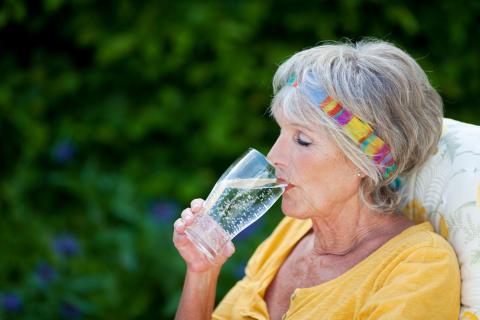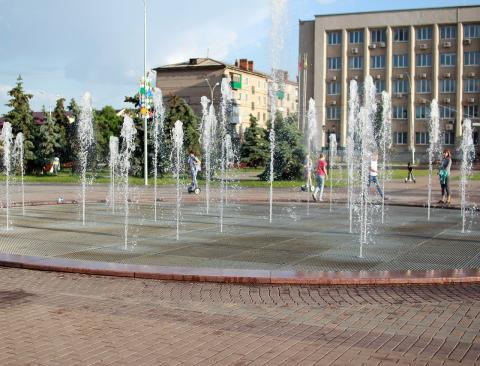Increasing proportion of older people exposed to heat that is hazardous to their health
Twenty-three per cent of the world's population over the age of 69 will be living with acute heat exposure by 2050, compared to 14 per cent in 2020, according to a study published in Nature Communications. The research highlights southern Europe, parts of North and South America, Southeast Asia and all of Australia as areas of ‘increasing stress’, where higher heat exposure overlaps with an increasingly ageing population. The effects will be most severe in Asia and Africa, according to the study.

240514 Calor y mayores - Cristina y Julio EN
Cristina Linares
Senior scientist at the Carlos III Health Institute
Julio Díaz
Research professor and co-director of the Reference Unit on Climate Change, Health and the Urban Environment at the Carlos III Health Institute
We think it is an interesting article to have a global view of what will be the population over 65 years of age affected by certain temperatures in different emission scenarios.
The problem with these global studies is that they use exposure to standard temperatures to define heatwave days and their intensity, regardless of local characteristics, which go beyond fixed temperatures and fixed percentiles. In fact, this article states: ‘we use the annual count of hot days (#HDs: days with maximum temperature exceeding 37.5° C) and the 95th percentile of the 20 y daily maximum temperature distribution (TMAX95)’.
These definitions are not in line with those of the WHO, which establishes that in order to analyse the impact on mortality of heatwave days and the intensity of the heatwave, this cannot be done on the basis of meteorological criteria alone, but on the basis of epidemiological temperature-mortality relationships, since heat-related mortality is influenced by more factors than just meteorology, such as income level, socioeconomic, demographic, health or urban planning conditions.
For example, in Spain, according to the definition of heat wave set out in this article, there would be one person at risk when according to the Ministry of Health values this would not be the case. For example, Badajoz, Cordoba, Seville and others have a heatwave definition temperature above 37.5ºC. In other words, in these cities, for daily maximum temperatures of 37.5ºC there is no significant impact on mortality.
On the other hand, defining the intensity of the heatwave based on a fixed percentile (95 %) would not be representative for Spain where, at the isoclimatic level, in 52.5 % of the regions the heatwave definition temperatures are below the 95th percentile.
In summary, the study presented serves to analyse the percentage of the elderly population subjected to certain temperature conditions, but not to infer health impacts.
Simon Lloyd - calor gente mayor EN
Simon Lloyd
Postdoctoral researcher at ISGlobal specialising in climate and health
I’m glad to see this well executed paper drawing much needed attention to these important challenges. As the authors note, it’s always necessary to make assumptions when projecting potential futures. For instance, it wasn’t possible to account for the huge influence of the rapid urbanization occurring in many parts of the world: this is concentrating people in large cities, very often in slums (also called ‘informal settlements’) and this potentially puts older people at even higher risk, including to the impacts of heat. This means, as with all studies of possible futures, that it’s not the exact numbers that are important, but rather their overall magnitudes. Here we see that in all the futures considered, the older populations facing high risk are large: the paper makes it clear that we need to take action that accounts for both climate change and ageing now.
Something worth noting is that the study classifies people as ‘old’ based on the number of years they have already lived; that is, their chronological age. This may inadvertently downplay the potential benefits of futures that give high priority to mitigating climate change and sustainable development. Sustainability isn’t just about the environment: it’s also about social change that tries to ensure all people are able to flourish and have good health. In this case, even though the size of older populations may rise substantially, these people are likely to have lower susceptibility to the impacts of heat. In other words, in a sustainable future, a person aged, say, 80 years old, is likely to be less vulnerable than an 80-year-old in a less sustainable future. Similarly, the vulnerability of an 80-year-old is likely to differ by country and over time. These differences are missed in this analysis, but can be accounted for by using a different measure of age, known as prospective age. This is based not on the number of years already lived, but on how many years someone can still expect to live: as longevity rises, people of a given chronological age are effectively ‘younger’. If this were accounted for in the current analysis, I’d expect that the benefits of not only minimising climate change, but also of continually improving the everyday lives of all people across their entire lives, would be more evident.
Giacomo Falchetta et al.
- Research article
- Peer reviewed
- Modelling



